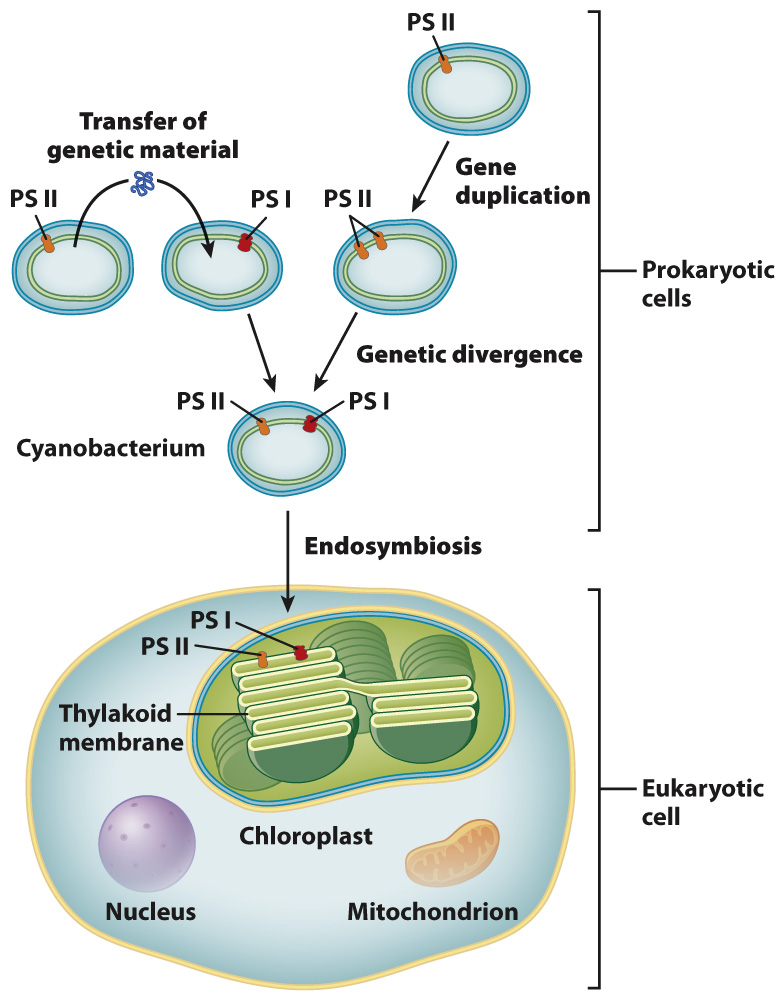The ability to use water as an electron donor in photosynthesis evolved in cyanobacteria.
The most ancient forms of photosynthesis have only a single photosystem in their photosynthetic electron transport chains. However, as we have seen, a single photosystem cannot capture enough energy from sunlight both to pull electrons from water and also raise their energy level enough that they can be used to reduce CO2. Thus, photosynthetic organisms with a single photosystem must use more easily oxidized compounds, such as H2S, as electron donors. These organisms can exist only in environments where the electron-
A major event in the history of life was the evolution of photosynthetic electron transport chains that use water as an electron donor. The first organisms to accomplish this feat were the cyanobacteria. These photosynthetic bacteria incorporated two different photosystems into a single photosynthetic electron transport chain, one to pull electrons from water molecules and one to raise the energy level of the electrons so that they can be used to reduce CO2.

How did cyanobacteria end up with two photosystems? We cannot say for sure, but one relevant piece of information is that each of the two photosystems present in cyanobacteria is similar in structure to photosystems found in groups of photosynthetic bacteria that contain only a single photosystem. Thus, it is highly unlikely that the photosystems in cyanobacteria evolved independently. One hypothesis is that the genetic material associated with one photosystem was transferred to a bacterium that already had the other photosystem, resulting in a single bacterium with the genetic material to produce both types of photosystems (shown on the left in Fig. 8.19). The mechanisms by which genetic material is transferred between bacteria are discussed more fully in Chapter 26. Another hypothesis is that the genetic material associated with one photosystem underwent duplication. Over time, one of the two photosystems diverged slightly in sequence and function through mutation and selection, giving rise to two distinct but related photosystems (shown on the right in Fig. 8.19). This mechanism, called duplication and divergence, is discussed more fully in Chapter 14.
The ability to use water as an electron donor in photosynthesis had two major impacts on life on Earth. First, it meant that photosynthesis could occur anywhere there was both sunlight and sufficient water for cells to survive. Second, using water as an electron donor results in the release of oxygen. Before the evolution of “oxygenic” photosynthesis, there was little or no free oxygen in Earth’s atmosphere. All the oxygen in Earth’s atmosphere results from photosynthesis by organisms containing two photosystems.